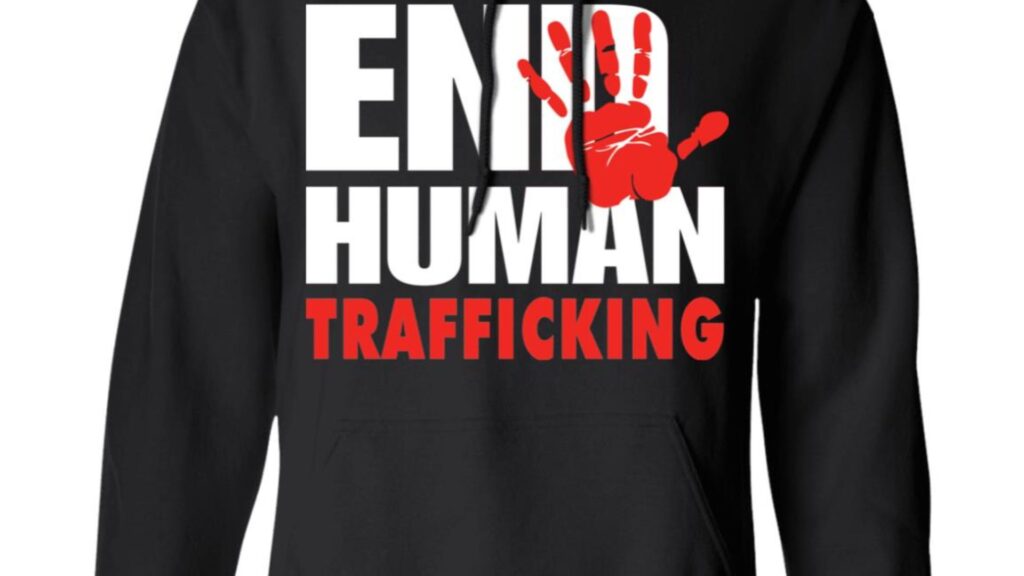Human trafficking is a terrible crime that brings a lot of darkness to our world. But what does it mean? Here we explore it more, revealing the different ways people are exploited, the signs we can look out for, and the important actions we can all take to stop this kind of abuse.
Understanding Human Trafficking
To begin with, trafficking in persons involves using force, lies, or threats to make people work or do sex acts against their will. Each year, millions of men, women, and kids are trafficked all over the world, including in the US. It can happen anywhere, and victims can be of any age, race, gender, or nationality.
Ways Used By Traffickers To Trick Victims
- Being Violent
- Lying To Them
- Offering Fake Jobs That Pay Well
- Pretending To Be in Love With Them
Reasons Why Vulnerable People Are Targeted
- They’re Sad or Scared
- They’re Poor
- They Don’t Have Anyone to Help Them
- There’s Been a Disaster or a War
Traffickers hurt victims so much that many victims don’t even know they’re victims or ask for help, even if they’re in public. There are many myths about human trafficking. Knowing what to look for is the first step in finding victims and helping them. But not every sign means there’s trafficking, and just because you see a sign doesn’t mean someone is being trafficked.
Types of Human Trafficking
Sex Trafficking
This form of trafficking involves the exploitation of individuals for commercial sex acts. Victims are coerced, deceived, or forced into prostitution, pornography, or other sexual activities against their will. Traffickers often use tactics such as manipulation, threats, or physical violence to control their victims.
Labor Trafficking
Labour trafficking occurs when individuals are exploited for labour or services through force, fraud, or coercion. Victims may be forced to work in fields, factories, construction sites, or domestic services under exploitative conditions. They may receive little or no pay, work long hours, and endure physical or emotional abuse.
Child Trafficking
Children are particularly vulnerable to trafficking due to their age and dependence on caregivers. They may be trafficked for various purposes, including forced labour, sexual exploitation, or organ trafficking. Children may be lured with promises of education, employment, or a better life, only to be subjected to abuse and exploitation.
Organ Trafficking
Organ trafficking involves the illegal trade of organs, often obtained through coercion or exploitation. Traffickers may deceive or force individuals into selling their organs, which are then sold on the black market to meet the demand for organ transplants. This form of trafficking exploits vulnerable individuals and violates their basic human rights.
Debt Bondage
Perpetrators trap victims in a cycle of exploitation through debt bondage, forcing them to work to repay an often inflated and unpayable debt. Victims may be deceived or coerced into taking on debt and subsequently compelled to work under exploitative conditions to settle it. Debt bondage perpetuates the cycle of poverty and servitude, trapping victims in a state of vulnerability and exploitation.
Signs of Human Trafficking
Physical Signs
Victims of trafficking may exhibit physical signs of abuse, such as bruises, scars, or untreated medical conditions. Victims show signs of being controlled by others, such as malnutrition, exhaustion, or restraint.
Behavioural Signs
Trafficking victims may display signs of fear, anxiety, or depression. They may avoid eye contact, seem submissive, or exhibit signs of psychological trauma. Victims may also show signs of disorientation or confusion.
Controlled Communication
Traffickers often control their victims’ communication, limiting their access to phones, the internet, or other forms of communication. Victims may be unable to speak freely or appear to be coached in their responses to questions.
Isolation
Traffickers may isolate victims from their family, friends, or community, making it challenging for them to seek help or escape. Victims often experience limited freedom of movement and close monitoring by their traffickers.
Exploitative Conditions
Victims of trafficking often work in exploitative conditions, with long hours, little or no pay, and inadequate access to food, water, or shelter. They may live and work in overcrowded or unsanitary conditions, further exacerbating their vulnerability.
Consequences of Human Trafficking
Impact on Victims
The consequences of human trafficking on victims are devastating and long-lasting. Victims often endure physical and psychological trauma, including physical abuse, sexual violence, and emotional manipulation. They may suffer from post-traumatic stress disorder (PTSD), depression, and anxiety, making it challenging to rebuild their lives even after escaping their traffickers.
Furthermore, victims of human trafficking may face stigma and discrimination from society, exacerbating their sense of isolation and alienation. Moreover, many struggle to access essential services such as healthcare, housing, and employment opportunities, further hindering their recovery and reintegration into society.

Economic Consequences
Human trafficking undermines economic development and prosperity by exploiting vulnerable individuals and perpetuating cycles of poverty. Additionally, traffickers profit from the cheap labour and forced services of their victims, driving down wages and working conditions for all workers in affected industries.
Moreover, human trafficking drains resources from communities and governments as they struggle to combat this pervasive issue. The costs of law enforcement, victim support services, and legal proceedings place a significant burden on public finances, diverting funds away from other essential services such as education and healthcare.
Social and Cultural Impact
The social and cultural consequences of human trafficking are profound, eroding trust, cohesion, and social norms within communities. Additionally, trafficking undermines the fabric of society by exploiting vulnerable individuals and perpetuating inequality and injustice.
Furthermore, human trafficking perpetuates harmful stereotypes and prejudices, particularly against marginalized groups such as women, children, migrants, and refugees. These stereotypes contribute to the dehumanization and objectification of victims, making it easier for traffickers to exploit them with impunity.
Public Health Implications
Human trafficking significantly impacts public health, exposing victims to violence, coercion, and exploitation that can result in physical and mental health issues. Victims may suffer from chronic pain, injuries, and sexually transmitted infections as a result of their exploitation.
Moreover, the trauma experienced by victims of human trafficking can have long-term consequences for their health and well-being. Many survivors struggle with substance abuse, self-harm, and suicidal ideation as they attempt to cope with their traumatic experiences.
Legal and Justice Ramifications
Human trafficking poses complex legal and justice ramifications, as traffickers operate across national borders and exploit legal loopholes to evade prosecution. Weak or inadequate legislation, corruption, and lack of enforcement mechanisms further impede efforts to hold traffickers accountable for their crimes.
Ways To Prevent Human Trafficking
Raise Awareness
Education serves as a potent weapon in combating human trafficking. By raising awareness about the realities of trafficking, you can help dispel myths, break the silence surrounding the issue, and empower communities to take action. Moreover, organize informational sessions, workshops, and awareness campaigns to educate people about the signs of trafficking, the tactics used by traffickers, and the impact of this crime on victims and society.
Support Victims
Trafficking survivors often face significant challenges in rebuilding their lives and accessing essential services. As individuals, we can support victims by providing a safe and supportive environment, offering resources such as shelter, counselling, and legal assistance, and advocating for their rights and dignity. By offering empathy, compassion, and practical support, we can help survivors heal from their trauma and regain control of their lives.
Report Suspected Cases
If you suspect human trafficking or encounter someone who may be a victim, it’s crucial to report your concerns to the appropriate authorities. Additionally, contact law enforcement agencies, anti-trafficking hotlines, or local non-profit organizations specializing in victim assistance. Be vigilant and observant of potential signs of trafficking, such as physical injuries, behavioural changes, or controlled communication. By reporting suspected cases, you can help rescue victims and hold traffickers accountable for their crimes.
Advocate for Policy Change
Policy advocacy plays a crucial role in addressing the root causes of human trafficking and strengthening anti-trafficking efforts. Furthermore, advocates for legislation and policies that prioritize the prevention of trafficking, the protection of victims, and the prosecution of traffickers. Additionally, support initiatives aimed at addressing factors that contribute to vulnerability to trafficking, such as poverty, inequality, and lack of access to education and employment opportunities. By engaging policymakers, raising public awareness, and mobilizing support, you can drive positive change and create a more robust legal framework to combat trafficking.
Combat Demand
Addressing the demand for exploitative labour and commercial sex acts is essential in ending human trafficking. Promote ethical consumption practices, support businesses that uphold labour standards and human rights, and raise awareness about the consequences of supporting industries that rely on forced labour or sexual exploitation. Encourage governments to enforce laws against trafficking and implement measures to hold businesses and individuals accountable for their role in perpetuating trafficking. By reducing demand for products and services produced through exploitation, we can undermine the profitability of trafficking networks and disrupt their operations.
Support Survivor-Led Initiatives
Survivor-led initiatives play a vital role in the anti-trafficking movement, providing peer support, advocacy, and empowerment to survivors. Furthermore, support survivor-led organizations and initiatives that amplify the voices of survivors, advocate for their rights, and create opportunities for healing and recovery.
Empowering Our Communities
Law enforcement plays a vital role in dismantling trafficking networks. However, combating this crime truly requires a community effort. By educating ourselves, spotting the signs, and taking action, we can build a network of awareness and support.
Conclusion
FAQs
What is human trafficking?
Human trafficking, also known as trafficking in persons, involves using force, deception, or coercion to exploit individuals for labour or sex acts against their will. It is a serious crime that victimizes millions of people worldwide.
Who are the victims of human trafficking?
Human trafficking victims come from diverse backgrounds, regardless of age, race, gender, or nationality.
How do traffickers trick their victims?
Traffickers use various tactics to deceive and manipulate their victims, including violence, lies, false promises of well-paying jobs, and feigning romantic relationships. Moreover, they prey on vulnerable individuals who may be sad, scared, or in desperate situations.
What are the signs of human trafficking?
Signs of human trafficking include physical injuries, behavioural changes such as fear or anxiety, restricted communication, and social isolation. However, not every sign indicates trafficking, so it’s essential to be vigilant and seek professional help if needed.
What are the different types of human trafficking?
Human trafficking can take different forms, including sex trafficking, labour trafficking, child trafficking, organ trafficking, and debt bondage. Moreover, each type involves the exploitation of victims for various purposes, often under coercive or abusive conditions.
What are the consequences of human trafficking?
The consequences of human trafficking are devastating for victims, who often endure physical and psychological trauma, stigma, and economic hardship. Additionally, trafficking also has broader societal impacts, including undermining economic development and perpetuating social inequality.
How can we prevent human trafficking?
Prevention efforts include raising awareness, supporting victims, reporting suspected cases to authorities, advocating for policy change, and combating the demand for exploitative labour and commercial sex acts. Furthermore, by taking collective action, we can work towards ending human trafficking and protecting vulnerable individuals.
What should I do if I suspect human trafficking?
If you suspect human trafficking or encounter someone who may be a victim, it’s essential to report your concerns to the appropriate authorities, such as law enforcement or anti-trafficking hotlines. Furthermore, avoid confronting traffickers directly and focus on providing support and assistance to potential victims.
How can I raise awareness about human trafficking in my community?
You can raise awareness about human trafficking by organizing educational events, sharing information on social media, and collaborating with local organizations working to combat trafficking. Additionally, by educating others and fostering dialogue, you can help prevent trafficking and support victims.

